 |
|
|
6
March
2007 |
|
|
Tuesday,
March 6
University Series
Speaker:
Robert
Wallace
Tuesday, March 20
Informal Smoker
Tower Club Bar
Tuesday, April 3
University Series
Speaker: Jack Zimmerman
Tuesday, April 17
Informal Smoker
Tower Club Bar
Tuesday, May 8
University Series
Speaker:
Charles Wheelan
Tuesday, May 22
Informal Smoker
Tower Club Bar
Tuesday, June 4
University Series
Speaker: Ted Foss |
|
 |
|
|
About the Cigar Society |
|
|
ONE OF THE OLDEST
AND greatest traditions of the University Club is the
discussion of intellectual, social, legal, artistic, historical,
scientific, musical, theatrical, and philosophical issues in the
company of educated, bright, and appropriately provocative
individuals, all under the beneficent influence of substantial
amounts of tobacco and spirits.
The University
Club Cigar Society embraces this tradition and extends it
with its fortnightly Informal Smokers, monthly
University Series lectures, and quarterly Cigar Society Dinners,
in which cigars, and from time to time pipes and cigarettes,
appear as an important component of our version of the classical
symposium.
The Informal
Smokers meet at the round table in the Tower Club bar.
There are no reservations or cover charges, and each member
signs his own chit for drinks a lá carte. Sometimes a
theme is published in
advance, but the table talk always strays.
The format of the Cigar Society University Series
includes cocktails at 5:15pm, a lecture or reading starting at
5:30 sharp for about thirty minutes, and discussion and more
cocktails to follow.
Premium open bar and light snacks are included in University
Series events; members sign a chit for $30 and guests may pay $40
(inclusive) in cash.
All University
Club and Tower Club members and their guests are invited to all
Cigar Society events.
To be included in
the Cigar Society's mailing list, write to the Secretary, Curtis
Tuckey, at tuckey@post.com.
|
|
 |
|
|
With my cigar, I'm sage and wise;
without, I'm dull as cloudy skies.
When smoking, all my
ideas soar;
when not, they sink upon the floor.
The
greatest men have all been smokers.
And so were all the
greatest jokers. |
|
 |
|
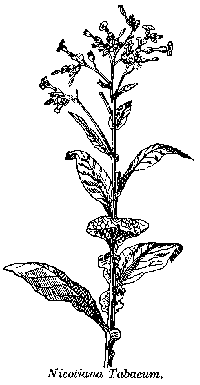 |
|
|
University Club Cigar Society
Officers for 2007
David O'Connor, King.
Gerald I. Bauman, Treasurer.
Curtis
Tuckey, Secretary.
J. Douglas Johnson, Liaison to Chicago
Croquet Club (Honorary).
Jeffrey Dean, Chair of the Subcommittee concerning Pipe Smoking.
Alexander Sherman, Metropolitan Philosopher.
Thomas O'Brien,
Stentorian.
John H. Nelson, Herald.
|
|
|
|
|
University
Series, Tuesday, March 6, Tower Club, 5:15 |
|
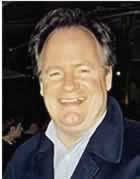 Robert Wallace, professor of
classics at Northwestern University and cigar club regular, will present
A Whirlwind Tour through Greek and Roman Coins,
from the world's first issues struck in western Asia
Minor in the sixth century BC, to the silver-washed masterpieces of
ancient art that marked the fall of Rome. A bit of economic history, Robert Wallace, professor of
classics at Northwestern University and cigar club regular, will present
A Whirlwind Tour through Greek and Roman Coins,
from the world's first issues struck in western Asia
Minor in the sixth century BC, to the silver-washed masterpieces of
ancient art that marked the fall of Rome. A bit of economic history,
 a
bit of politics, a slide-show of lots of smashing images, and plenty of
glittering silver and gold. Cocktails at 5:15; lecture at 5:30;
discussion to follow at 6:00. $30 includes premium open bar and light
hors d'oeuvres. RSVP to Laura
Herold, Tower Club Manager. a
bit of politics, a slide-show of lots of smashing images, and plenty of
glittering silver and gold. Cocktails at 5:15; lecture at 5:30;
discussion to follow at 6:00. $30 includes premium open bar and light
hors d'oeuvres. RSVP to Laura
Herold, Tower Club Manager.
Professor Wallace (BA Columbia
'72, MA Oxford '77, PhD Harvard '84) has an ongoing project with the
American Numismatic Society to analyze the metallic composition of early
electrum coinage. He is recently co-editor of Poet,
Public, and Performance in Ancient Greece (Hopkins, 1997), and is
currently writing a book about Damon, the Greek music theorist and teacher
of Pericles. |
|
Readings |
|
from
All that Glitters,
Cigar Aficionado
It
was billed as the "Rendezvous with Destiny" sale, and as the world's
preeminent coin collectors streamed into the St. Moritz Hotel in New
York City last spring, euphoria reigned. No one was thinking of the pall
that had settled over their world earlier this decade, the "crash" that
sent the values of super-grade coins plummeting 50, 60, even 70 percent
from their stratospheric levels of 1989. Instead, as the CNN cameras
focused on the glittering Draped Busts and Liberty Seated coins and
other fabled items from the Louis E. Eliasberg Collection, the giddy
talk among dealers and investment consultants was only of anticipated
record prices--the "bounce" that would spur a long-overdue turn in this
bearish market. [continued] |
|
|
|
from
Introduction to Greek Coins,
University of Saskatchewan Museum of Antiquities
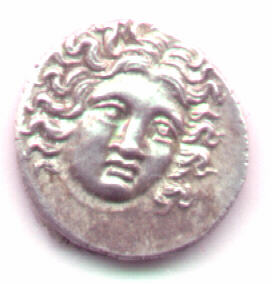 Cattle were the prized commodity on which the Greek monetary system was based. The Greek
islands of Cyprus and Crete during the 16th to 10th centuries B. C.
were international trading ports where Assyrians, Mesopotamians, and
Egyptians met to trade their goods. With each territory having its
own unique currency (Egypt traded in gold, Greece in silver and
copper), it was necessary to find a monetary common denominator on
which to base trade. The value of an ox was universal in antiquity
and became the basis on which all currency was evaluated. A 25.5 g
copper ingot, 8.5 g grams of gold were of equal value to a whole
ox. This association of monetary values with cattle is well
illustrated by the appearance of copper and bronze tablets cut into
the shape of ox hides. Coins eventually replaced bars and ingots as
currency because they were easier to transport. The Greek historian
Herodotus informs us that the Lydians first invented coinage: Cattle were the prized commodity on which the Greek monetary system was based. The Greek
islands of Cyprus and Crete during the 16th to 10th centuries B. C.
were international trading ports where Assyrians, Mesopotamians, and
Egyptians met to trade their goods. With each territory having its
own unique currency (Egypt traded in gold, Greece in silver and
copper), it was necessary to find a monetary common denominator on
which to base trade. The value of an ox was universal in antiquity
and became the basis on which all currency was evaluated. A 25.5 g
copper ingot, 8.5 g grams of gold were of equal value to a whole
ox. This association of monetary values with cattle is well
illustrated by the appearance of copper and bronze tablets cut into
the shape of ox hides. Coins eventually replaced bars and ingots as
currency because they were easier to transport. The Greek historian
Herodotus informs us that the Lydians first invented coinage:
The Lydians...so far
as we have knowledge...were the first nation to introduce the use
of gold and silver coin, and the first who sold goods by retail.
(Herodotus 1.94, trans. Rawlinson)
Familial coats of arms
were the first patterns imprinted on coins. Later, when rulers of
the city-states had taken control of minting, the arms of monarchs
became the symbol of the city-state itself. Very often a coat of
arms was determined by a particular deity for which the city-state
had an affinity. For example, periodically, throughout its history
the city-state of Athens minted owl coinage which was
decorated on the obverse with the head of Athena, the patron goddess
of Athens, and on the reverse with the owl, associated with her
worship. Other symbols might be animals or plants which typified a
certain region. Until the Hellenistic period the images of
monarchs and great men were never depicted on Greek coinage.
[continued] |
|
|
from
Fleur de Coin ("Flower of
the Die"), Yiannis Androulakis
"Fleur de Coin: A perfect or
virtually perfect coin. Fully struck up. No Contact- or other
Detracting Marks visible with the naked eye, and only minute
superficial imperfections, relating to the manufacturing process
rather than any other cause, may be visible under magnification. Fully
Lustre or Mint Bloom is present. Toning on Silver coins (if present)
must be attractive. Brilliance (Color) on Bronze Coins should be 90%
plus. Eye Appeal is outstanding. To reiterate, it is a completely
flawless mint state coin with nothing forgiven. This grade is very
rare, not to be taken lightly or accepted easily."

Ever wonder why our coins today look the way they do? How the basis for
the decoration of coins developed? Today, most bills and coins alike
share the common pattern of depicting the profile or bust of a ruler on
the obverse, while the reverse bears the image of an important civic
symbol - be it a building or an animal. This tradition began with the
ancient Greeks.
The historical portraits on early Greek coins are a significant
contribution to the history of art. Within them they reflect the highest
ideals of the traditional art of the day, as well as provide exact
replicas of images of many sacred and important buildings and temples,
making their historical importance incalculable. From their very
beginnings, coins were not merely chunks of metal to be used in
commerce, but important tools for the expression of art and the
communication of religious devotion and civic pride. [continued]
|
|
|
|
More links from
esty.ancients.info
Answers to frequently asked
questions (mostly for beginners), associated pages about
buying,
selling, and
moving up from "beginner" to "intermediate" collector
(including book recommendations),
 Annotated Roman coin educational links (with some Greek coin links too),
information about
rarity and its
importance for cost (for intermediate collectors), and information about
avoiding fakes.
A
Guide to Late Roman AE Coin Types, AD
364-450.
A complete list of types of
emperors Valentinian I through Theodosius II and
Valentinian III. A
resource for collectors of Late Roman AE coins.
An educational site about
genuinely ancient coins that were imitations or counterfeits in their
day.
An educational site
for ancient coin collectors about sale catalogs.
Byzantine types from the
city of Cherson in the Crimea in Ukraine.
An illustrated list of all the coin types of the Tripolis
mint. The
unusual "quarter-follis" denomination struck 305-306 AD under the
tetrarchy.
An illustrated list of all the varieties.
Officina
mintmarks of the Roman emperors Diocletian and Maximian at Siscia
(289-290 AD). The unique use of the Jovian and
Herculian titles to indicate
officina
numbers.
[continued] Annotated Roman coin educational links (with some Greek coin links too),
information about
rarity and its
importance for cost (for intermediate collectors), and information about
avoiding fakes.
A
Guide to Late Roman AE Coin Types, AD
364-450.
A complete list of types of
emperors Valentinian I through Theodosius II and
Valentinian III. A
resource for collectors of Late Roman AE coins.
An educational site about
genuinely ancient coins that were imitations or counterfeits in their
day.
An educational site
for ancient coin collectors about sale catalogs.
Byzantine types from the
city of Cherson in the Crimea in Ukraine.
An illustrated list of all the coin types of the Tripolis
mint. The
unusual "quarter-follis" denomination struck 305-306 AD under the
tetrarchy.
An illustrated list of all the varieties.
Officina
mintmarks of the Roman emperors Diocletian and Maximian at Siscia
(289-290 AD). The unique use of the Jovian and
Herculian titles to indicate
officina
numbers.
[continued]
|
|
|
University
Series, Tuesday, April 3, Tower Club, 5:15 pm |
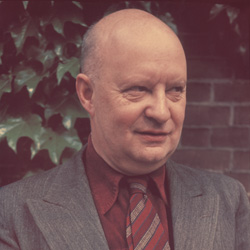 Chicago
author Jack Zimmerman will join the Cigar Society to open the
spring baseball season with readings from his southside-Chicago baseball
novel, Gods of the Andes. Cocktails at 5:15, reading at 5:30,
discussion to follow at 6:00. $30 includes open bar and light
hors d'oeuvres. Bring your own cigars. RSVP to Laura
Herold, Tower Club Manager. Chicago
author Jack Zimmerman will join the Cigar Society to open the
spring baseball season with readings from his southside-Chicago baseball
novel, Gods of the Andes. Cocktails at 5:15, reading at 5:30,
discussion to follow at 6:00. $30 includes open bar and light
hors d'oeuvres. Bring your own cigars. RSVP to Laura
Herold, Tower Club Manager.
Jack Zimmerman grew up on the
southwest side of Chicago and graduated from the Chicago Conservatory of
Music.
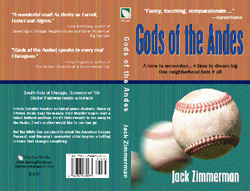 He spent four years in the Navy during the Vietnam War and worked
as a college instructor, freelance trombone player, piano tuner,
newspaper columnist, and PR man. Presently, he works in the public
relations department of Lyric Opera of Chicago and writes newspaper
columns for Liberty Suburban Newspapers and the Chicago Journal. His novel, Gods of the Andes, was published by New Leaf
Books in September 2006, and a collection of his short writings, 10,000 Years
in the Suburbs, was published in 1994 by Lake View Press. He
lives in Chicago with his wife, Charlene. He spent four years in the Navy during the Vietnam War and worked
as a college instructor, freelance trombone player, piano tuner,
newspaper columnist, and PR man. Presently, he works in the public
relations department of Lyric Opera of Chicago and writes newspaper
columns for Liberty Suburban Newspapers and the Chicago Journal. His novel, Gods of the Andes, was published by New Leaf
Books in September 2006, and a collection of his short writings, 10,000 Years
in the Suburbs, was published in 1994 by Lake View Press. He
lives in Chicago with his wife, Charlene.
Jack Zimmerman writes like the guy next
door—if you happen to live next door to Richard Russo, Studs Terkel,
or Mark Twain. Gods
of the Andes is funny, touching, compassionate, the story of
all of us who grew up on pavement in the city with the big shoulders.
—Harold
Ramis
|
| |
|
University
Series, Tuesday, May 8, Tower Club, 5:15 pm |
 Charles Wheelan, club member and lecturer in public policy at the
University of Chicago, will talk about his forthcoming book, An
Introduction to Public Policy. Cocktails at 5:15, lecture at
5:30, discussion to follow at 6:00.
$30 includes open bar and light hors d'oeuvres. Bring your own cigars. RSVP to Laura
Herold, Tower Club Manager.
Charles Wheelan, club member and lecturer in public policy at the
University of Chicago, will talk about his forthcoming book, An
Introduction to Public Policy. Cocktails at 5:15, lecture at
5:30, discussion to follow at 6:00.
$30 includes open bar and light hors d'oeuvres. Bring your own cigars. RSVP to Laura
Herold, Tower Club Manager.
Professor
Wheelan has a PhD in public policy from the University of
Chicago's Harris Graduate School of Public Policy Studies and a Master
of Public Affairs from Princeton. He is the author of
Naked Economics, a book that the Chicago Tribune
described as "clear, concise, informative, and (gasp) witty."
He also wrote a series of essays to accompany Terry Evans's photographs
for their recent book,
Revealing Chicago. He is currently the author of a regular
Yahoo! column,
The Naked Economist, and a frequent contributor to the Motley Fool on
National Public Radio and to 848 on WBEZ. He lives in Chicago
with his wife and three children. |
|
|
|
Respectfully
submitted by |
|
Curtis
Tuckey, Secretary |
|
|
|
|
|
 |
|
|
|
|